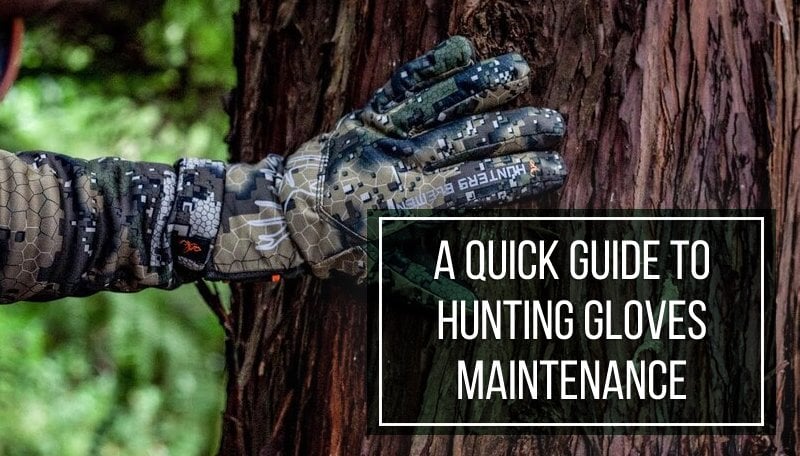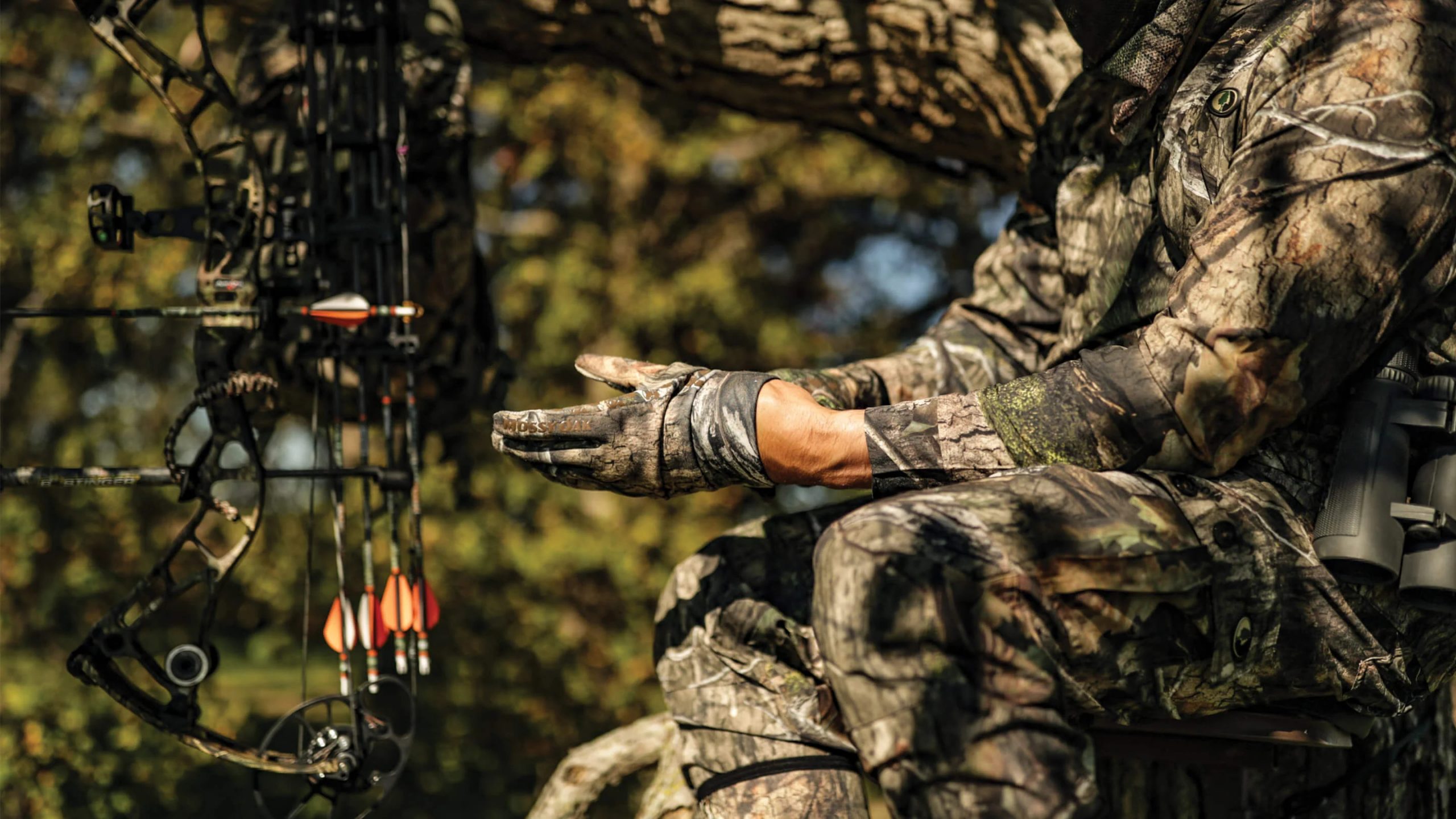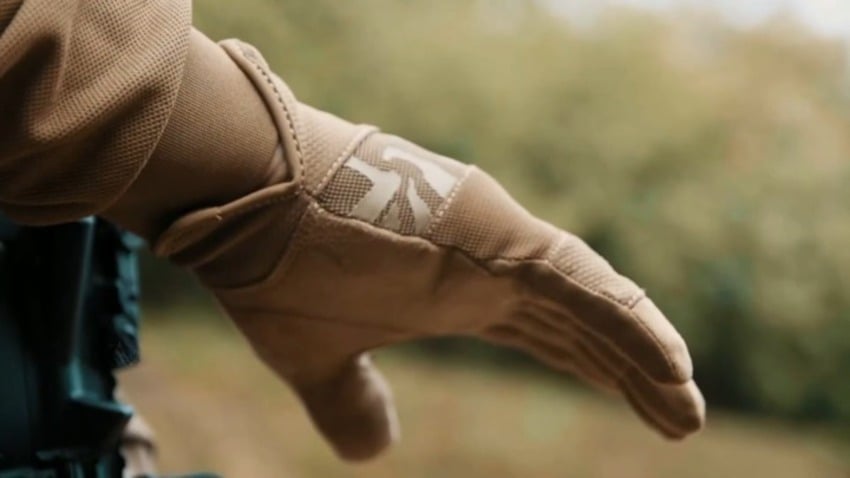Last Updated on
A pair of gloves is not an obligatory attribute of a hunter, and yet these accessories often end up being quite handy. They are especially irreplaceable during colder periods of the year as no other item can keep your hands warm, given you didn’t learn to shoot a rifle from your pocket. There are many standards that hunting gloves should adhere to, so if there is a pair that manages to meet all the demands, it is well worthy of your care and attention. There is no universal hunting gloves maintenance formula, as they might be made from a wide variety of materials, and thus each needs special treatment. In this guide, we cover how to maintain different varieties of hunting gloves.
Table of Contents
Main Hunting Glove Materials
Leather Hunting Gloves Maintenance
GORE-TEX Hunting Gloves Maintenance
Polyester Hunting Gloves Maintenance
Conclusion
FAQS
Main Hunting Glove Materials
The type of material chosen for hunting gloves determines their performance and how they should be treated. Different materials offer different levels of insulation, breathability, waterproofing, and durability. They also react differently to certain compounds and cleaning techniques. The most popular hunting glove materials are leather, synthetic materials like GORE-TEX, and polyester.
Leather is the most iconic material for hunting gloves. Apart from their gorgeous and authentic looks, they can boast a variety of features hunters will find most useful. Those are durability, waterproofness and superior dexterity. However, they require regular maintenance and can be on the more expensive side.
GORE-TEX gloves are perfect for extreme weather conditions as they provide superior insulation and breathability. Plus, they don’t get wet easily and keep your hands dry during rainy days or snowstorms. However, they tend to be bulky and not very flexible.
Polyester is a lightweight material that dries quickly and offers great breathability. It also provides good insulation but it’s not as durable as leather or GORE-TEX.
Rare gloves are made from only one material. The majority of them is a combination of several types. When deciding on the approach you should adopt, pay attention to the glove’s most delicate and vulnerable components and choose the appropriate method.
Leather Hunting Gloves Maintenance
The most common types of leather used for hunting gloves are deerskin, cowhide, goatskin, and pigskin. Deerskin is lightweight, soft and flexible, in one word, perfect for those who need dexterity when handling firearms or other equipment. It is also highly breathable and water-resistant, which makes it a great choice for wetter climates. Cowhide is thicker and more rigid than deerskin, offering greater protection from thorns or brambles. It is also the warmest type of leather, used in hunting gloves. Goatskin hunting gloves are the most rigid, waterproof and abrasion resistant of all, so they make for another fine choice. Pigskin is the most breathable material of all four, thanks to its porous structure. It is also more resistant to deforming and can be laundered with no harm to the shape.
Leather, regardless of its type and compound, requires special care and maintenance to stay in good condition. It is a delicate material, so extra caution should be taken when cleaning the gloves.
When it comes to washing the exterior of the glove, a damp microfiber cloth and mild soap should be used. Avoid using bleaches or any solvents that can cause discoloration. For best results, use a solution of soft soap mixed with hand-hot water and produce a lather. There are also dedicated leather cleaning soaps and mild oil-based soaps – you can use one of those. Gently sponge down the outside leather of the gloves with the lather, then wipe it off with a clean damp piece of a washcloth.
The inner part of the glove should also be cleaned regularly, as it accumulates sweat and everything that comes in a bundle. When cleaning the inside of the glove, it’s particularly important to avoid excessive moisture accumulation. You can theoretically use the solution mentioned above, but with as little water as possible. The dump cloth method is the most optimal one. That will help remove sweat and dirt build-up. Again, avoid using any harsh chemicals or bleaches on both sides of the glove as they can damage it permanently.
To ensure your hunting gloves last longer, do not machine wash them or put them in direct sunlight for extended periods as this may cause discoloration or shrinkage. Do not soak your gloves in water or scrub them while cleaning. Additionally, make sure you store them away from direct heat sources like radiators or fireplaces to prevent drying out and cracking of the leather material.
GORE-TEX Hunting Gloves Maintenance
Cleaning GORE-TEX gloves is a relatively simple process. The first step is to make sure there is no dirt or grit inside your gloves, as this can damage the material and reduce its waterproofing capabilities.
The next step is to hand wash your GORE-TEX gloves in lukewarm water with a small amount of liquid detergent. It’s important not to use bleach or fabric softeners when cleaning GORE-TEX gloves. Machine washing should also be avoided, as it may cause shrinkage and degrade the performance of the gloves. Unlike leather gloves, GORE-TEX gloves are less fragile when it comes to water, but we still don’t recommend soaking them completely. After washing, you should rinse them several times with clean water to remove all traces of detergent.
Once your GORE-TEX gloves are washed, you can proceed to dry them. Start by squeezing out any excess water from your gloves and then hang them up with the wrist facing down so that any remaining moisture will drip away from the glove’s insulation layer.
It may happen that after prolonged use your gloves may no longer bead water, absorbing it instead. It doesn’t mean they’ll lose their waterproof qualities, but their ability to breathe will be seriously diminished. You can reapply a durable water repellent by simply spraying the DWR onto them and leaving them to dry.
Polyester Hunting Gloves Maintenance
Washing polyester gloves is a much simpler task. As a rule, they are safe to throw into a washing machine, but it is always important to check the label before doing so. It is best to remove the linings and place gloves and lining in a mesh bag before putting them in the washing machine.
Even though polyester gloves can withstand a machine wash better than the other types, we still recommend hand-wash if you can allocate time. Hand washing your gloves will also prolong their service life and affect their shape to a lesser extent. To hand wash, fill a sink or basin with lukewarm water and add some mild detergent or soap. Gently rub each glove together for about five minutes, then rinse thoroughly with cold water. Leave the gloves dry on a flat surface away from direct sunlight or heat sources.
If you need to clean heavily soiled areas of your gloves, use a soft brush dipped in warm soapy water and gently scrub the affected area until clean. Rinse off any soap residue with cold water and allow them to air dry as above.
Conclusion
Taking good care of your hunting gloves is essential for their long-term performance. Proper maintenance will ensure that your gloves stay in top condition and can serve you faithfully for years. Depending on the type of glove, there may be different instructions for cleaning and caring for them, but some general rules apply to all types. Always use mild soap and avoid drying your gloves in direct sunlight or near heat sources. Taking the time to properly maintain your hunting gloves will surely pay off.
FAQs
What is the best way to clean your hunting gloves?
The best way to clean your hunting gloves is with your hands. Hand wash in lukewarm water using a mild detergent or soap and rinsing thoroughly before drying is the best recipe for any type of gloves. It is also important to read and follow the care instructions on the label before beginning any cleaning process.
What are some of the things you should avoid when cleaning your hunting gloves?
When cleaning your hunting gloves, you should avoid using hot water or harsh chemicals and solvents as these can damage the material. It is also important to avoid machine washing and drying gloves as this can cause shrinkage and affect the shape of the glove. Additionally, you should never dry your gloves over a direct heat source like a heat vent or radiator, as this could cause them to become overly stiff and hard.
How do you properly store your hunting gloves?
To store them properly, you should always make sure they are completely dry before folding and placing them in an appropriate storage container. You can also use a cedar block or other absorbent material to keep the leather from cracking. Additionally, avoid storing your gloves in direct sunlight or any area with extreme temperatures as this can cause damage to the material.
What are some of the most common problems people have with their hunting gloves?
The most common problems people have with their hunting gloves include wear and tear, altered fit, and cracking leather. Wear and tear can occur due to regular use or improper care of your gloves. An altered fit can be a result of washing your gloves neglecting the maintenance recommendations. Cracking leather is a problem caused by improper storage and maintenance of your gloves.















